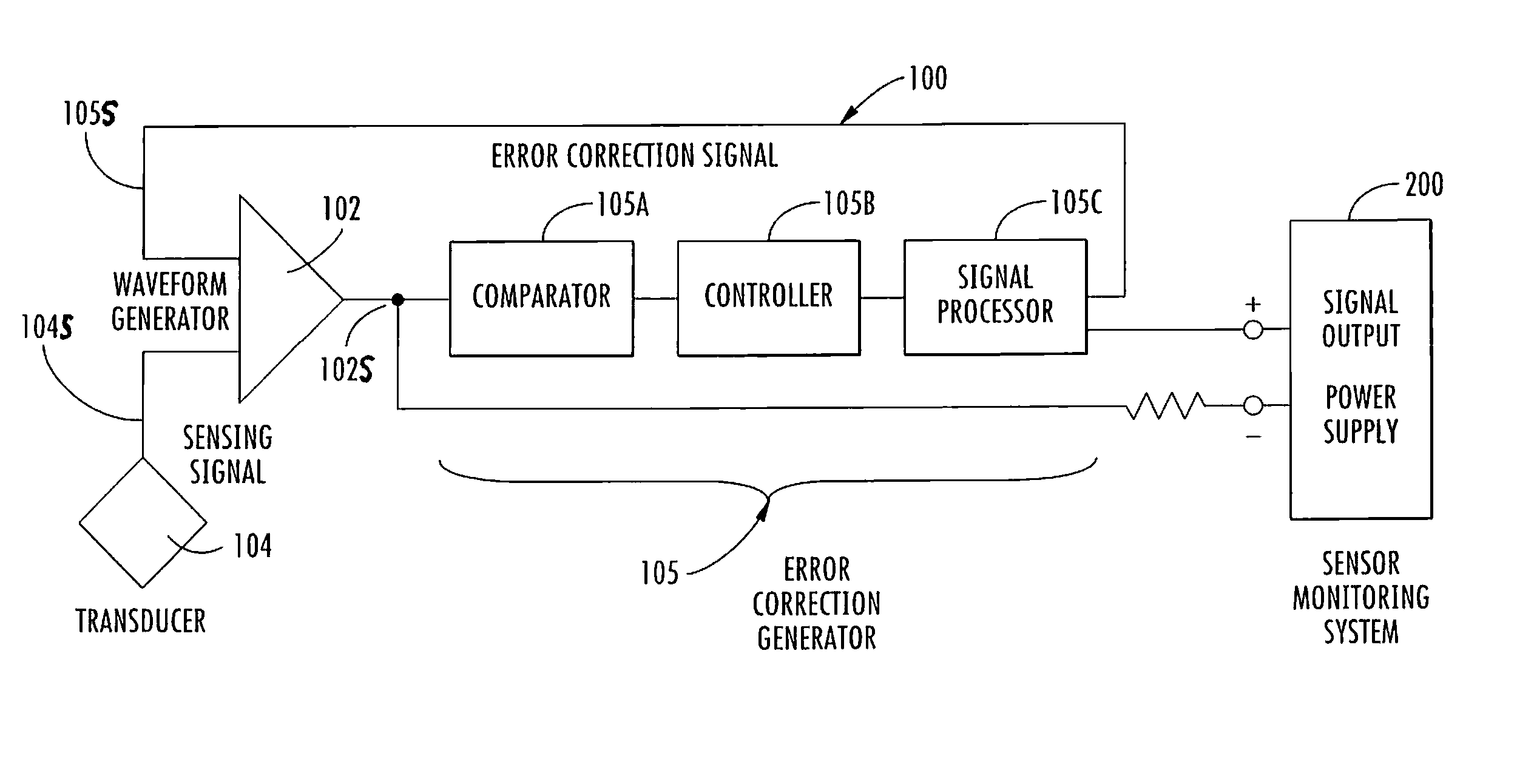Offset Compensated Position Sensor and Method
a position sensor and offset compensation technology, applied in the field of sensors, can solve the problems of increasing system cost and weight, generating low frequency noise of most position sensing transducers, and several unwanted electrical signals generally characterized as noise, so as to reduce the size and weight, reduce or eliminate the number of semiconductor devices
- Summary
- Abstract
- Description
- Claims
- Application Information
AI Technical Summary
Benefits of technology
Problems solved by technology
Method used
Image
Examples
Embodiment Construction
[0020] The present invention will now be described more fully hereinafter with reference to the accompanying drawings, in which preferred embodiments of the invention are shown. This invention may, however, be embodied in many different forms and should not be construed as limited to the embodiments set forth herein. Rather, these embodiments are provided so that this disclosure will be thorough and complete, and will fully convey the scope of the invention to those skilled in the art. Like numbers refer to like elements throughout, and prime notation is used to indicate similar elements in alternate embodiments.
[0021] With reference initially to FIG. 1, a position sensor 100 is herein described as including a waveform generator 102 operable for receiving an unconditioned sensing signal 104S from a transducer 104 and modifying the unconditioned sensing signal responsive to an error correction signal 105S for providing a conditioned sensing signal 102S. As will herein de described, ...
PUM
 Login to View More
Login to View More Abstract
Description
Claims
Application Information
 Login to View More
Login to View More - R&D
- Intellectual Property
- Life Sciences
- Materials
- Tech Scout
- Unparalleled Data Quality
- Higher Quality Content
- 60% Fewer Hallucinations
Browse by: Latest US Patents, China's latest patents, Technical Efficacy Thesaurus, Application Domain, Technology Topic, Popular Technical Reports.
© 2025 PatSnap. All rights reserved.Legal|Privacy policy|Modern Slavery Act Transparency Statement|Sitemap|About US| Contact US: help@patsnap.com



